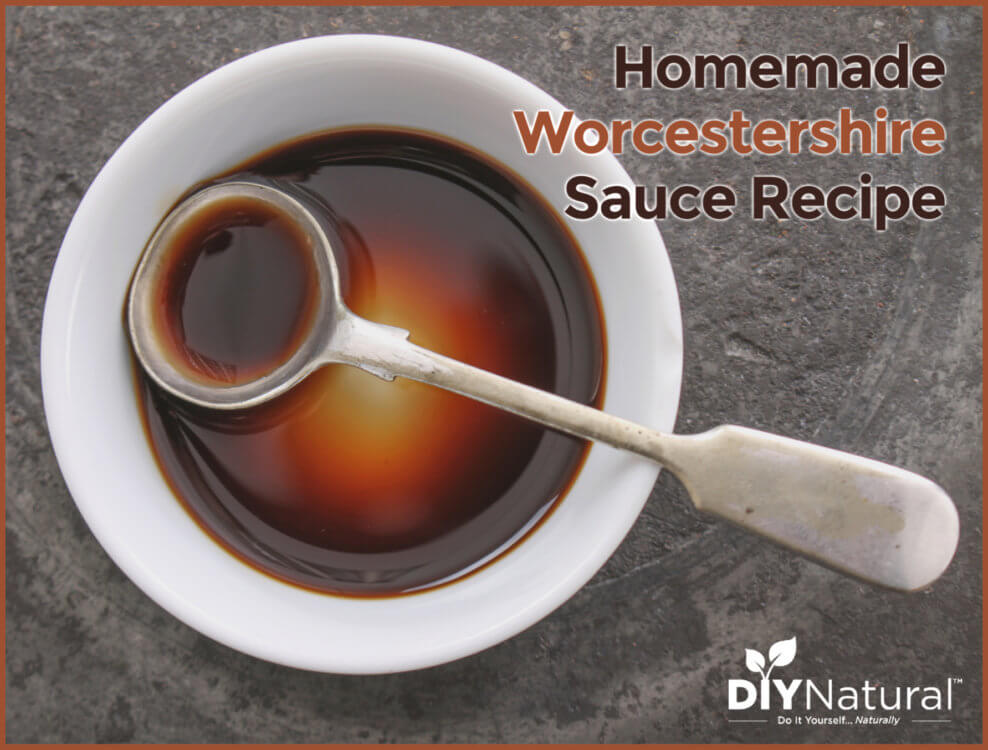

I love making my own condiments and one of my favorites is this homemade Worcestershire sauce recipe. This flavorful sauce is complementary to many dishes.
-
Foor Processor
-
Begin this Worcestershire sauce recipe by placing the raisins in a heatproof bowl and pouring the hot water over them. Wait 15 minutes or so for them to plump up, then drain.
-
Puree the raisins, ginger onions and garlic in a food processor. Add about half the vinegar, enough to make a paste.
-
Put this mixture in a saucepan and add the rest of the ingredients. Bring to a boil. Reduce heat and simmer for about five minutes. Remove from heat.
-
Pour this mixture into a quart jar and seal. Place the jar in a cool, dark place for about a month to mesh all the flavors together. You can leave it longer if you want a stronger flavor.
-
When your homemade Worcestershire sauce recipe is finished, strain it into another jar and store in a cool, dark place.
There is no need to refrigerate this since the vinegar is acidic enough to keep it preserved.
READ RELATED: Pumpkin Pancakes: A Healthy, Delicious Breakfast/Brunch Recipe
Serving: 1tablespoon | Calories: 20kcal | Carbohydrates: 5g | Protein: 1g | Fat: 1g | Saturated Fat: 1g | Cholesterol: 1mg | Sodium: 222mg | Potassium: 66mg | Fiber: 1g | Sugar: 3g | Vitamin A: 20IU | Vitamin C: 0.6mg | Calcium: 9mg | Iron: 0.2mg
Using Your Homemade Worcestershire Sauce
I use my sauce for a number of things. I add it to soups and stews for more flavor, on meats and veggies as a marinade and in things like making my own salty cereal snack mix. You can use it just like any other Worcestershire sauce, except remember that it will likely be stronger than what you would buy in the store. You probably won’t need quite as much. Experiment to see how your taste buds react.
Do I Need the Anchovies?
Anchovies provide a salty, nutty element. Some argue they’re absolutely necessary for Worcestershire sauce. However, if you don’t want anchovies in this Worcestershire sauce recipe try using capers instead. You’ll lose the nutty aspect but will still get the salt and some of the flavor. If you want the nutty taste, you can toast a few almonds, crush them, and add them to the mix before the sequestering period.
The same goes for other ingredients. Don’t want the heat from the red pepper flakes? Try paprika instead. Don’t want to use molasses? Try honey or maple syrup. There are many variations that you can do, depending on what your tastes are. I roast my garlic before using it to prevent that bitter taste associated with raw garlic.
You can also add herbs to your Worcestershire sauce recipe if you want a different flavor profile. Oregano, thyme, and tarragon all make good additions. For this size recipe, use 1/4 cup fresh chopped herbs or 2 Tablespoons dried. You can add more or cut back on the herbs depending on what you like.
This Worcestershire sauce recipe will keep in the cupboard for a year or so, possibly longer. It may separate or have floaty things in the bottom. This is normal with homemade mixes since you don’t use chemicals to clarify the mix or mechanical homogenizers to keep things in suspension. You can strain it again or simply shake the bottle before each use.
Other Homemade Condiments to Try
Enjoy making your own condiments? So do we! Here are a few more you can try:
Have you made a homemade Worcestershire sauce recipe or any other of your own condiments? Tell us about them!
*******
Source: DIY Natural – Food






